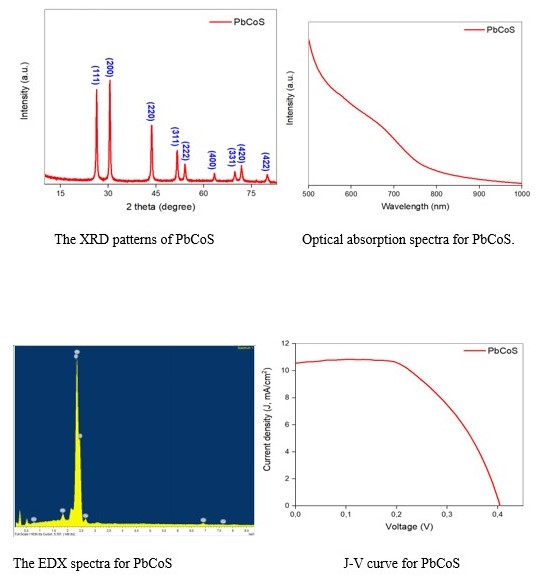
The quest for efficient, sustainable solar energy solutions has propelled the exploration of novel materials with enhanced photovoltaic properties. This study delves into the synthesis, characterization, and photovoltaic application of cobalt-doped lead sulfide (PbCoS) quantum dots (QDs) deposited on titanium dioxide (TiO2) substrates. Employing a hot-injection method, we synthesized PbCoS QDs and characterized their structural, compositional, and optical properties using X-ray diffraction (XRD), energy-dispersive X-ray spectroscopy (EDX), and UV-Visible absorption spectroscopy. The QDs demonstrated a cubic crystal structure with an average size of 20.12 nm and exhibited a direct band gap of 1.91 eV, indicative of quantum confinement effects and improved absorption in the visible spectrum. The photovoltaic performance of quantum dot-sensitized solar cells (QDSSCs) incorporating PbCoS QDs was assessed through current density-voltage (J-V) measurements, revealing a power conversion efficiency (PCE) of 2.17%. This efficiency highlights the potential of PbCoS QDs to enhance the performance of QDSSCs, partly attributed to the impact of cobalt doping on the electronic structure and photovoltaic properties of the material. The study identifies gaps in current research, such as the optimization of cobalt doping levels and the exploration of interface engineering between QDs and substrates, pointing towards future directions for enhancing the efficiency and applicability of PbCoS-based photovoltaic devices.
Total file downloads: 5